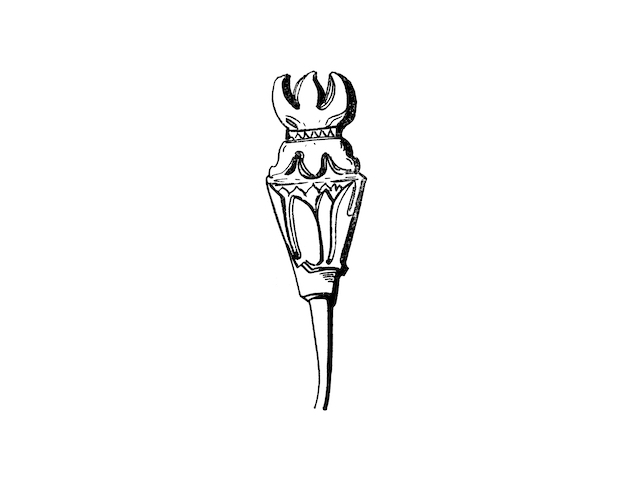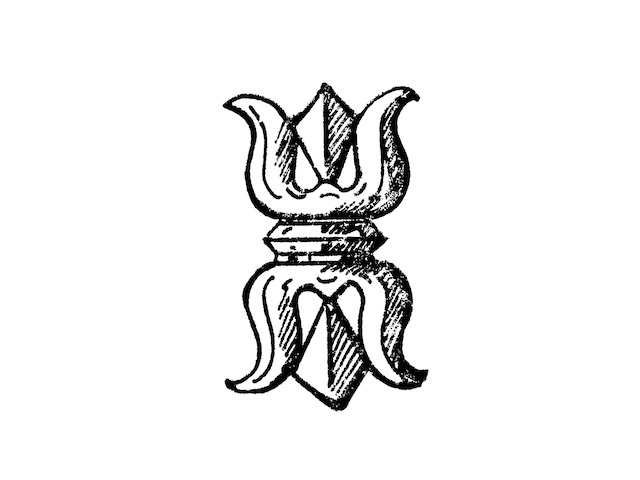vajra
The vajra (वज्र) is the special symbol of the Hindu God Indra. With this thunderbolt, he destroys the enemies of Hinduism.
Vajrapāṇi, the Buddhist Bodhisattva, also destroys the enemies of Buddhism with his vajra or thunderbolt. In Mesopotamia, the gods hold a double-trident. In India, it is the special symbol of Śiva.
‘The Northern Buddhists believe that Buddha wrested the thunderbolt from the Hindu god Indra, and adopted it as a Buddhist symbol with the slight change of closing the points of the darts.’ The vajras of Hindu gods show three darts which are flat and the points of which do not touch like those of the Tibetan vajras. The Tibetan variety is round, has four darts and the points are closed. This gives it the appearance of a lotus bud.
A fifth dart runs through the centre of the vajra, from end to end, making five darts, which represent the five bodies of Dhyāni Buddhas.
In Vajrayāna Buddhism, the vajra becomes the symbol of liṅga, the male sex organ.
Vajra means ‘diamond’. It is indestructible. It cannot bend, it cannot break. Like the Vajrayānist Śunyada it cannot break or bend.
Vajra on Padma is a thunderbolt placed vertically on a lotus.

Vajra on padma
